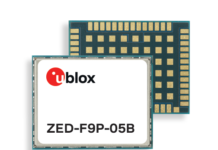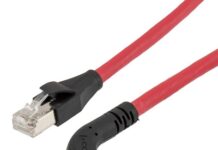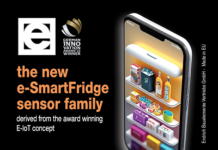
The Wi-Fi industry is going through major and rapid technology evolutions, enabling many new residential and enterprise use cases. The arrival of the pandemic, accelerated some trends, slowed others, and set the scene for revised future use-cases, market forecasts, product development and testing requirements. This phase has resulted in increased consumer purchases of Wi-Fi equipment, especially meshes and extenders to improve coverage. Businesses are helping WFH employees upgrade home broadband and Wi-Fi, while offering support on configuration and troubleshooting, whereas, some have upgraded their own VPN capacity, together with their managed service providers.
Given these trends, many service providers are likely to push Wi-Fi 6, especially for new and upgraded customers with 100Mbps/Gbps access connections. They may combine improved Wi-Fi with other differentiated broadband services for enterprise WFH access and VPNs, or especially demanding consumer groups such as, gamers and VR/AR users. There is growing use of assistant apps on smartphones to enable better troubleshooting and optimization of home Wi-Fi, like the set-up of mesh implementations and automated customer service and support.
Wi-Fi Testing
The complexity of traditional Wi-Fi testing has steadily grown over time with creation of Wi-Fi test labs to meet today’s requirements. Greater need for performance assurance, variety of use-cases and applications, new deployment models and shifting user behaviour has put a premium on new Wi-Fi testing approaches. Device vendors, service providers, enterprises and industrial systems suppliers increasingly have new testing requirements. Also, there is a growing requirement for test automation, with rapid cycles of testing for service providers facilitating new Wi-Fi 6 access points, mobile hotspots, mesh nodes and additional services / features such as; VoWiFi and multi-user MIMO. There is also a rapid emergence of specific test-cases aligning with WFH-driven application demand patterns – especially conferencing and cloud access, along with Wi-Fi calling, gaming and education.
Wi-Fi 6 and now Wi-Fi 6E, fuelled by more than a gigahertz of new spectrum, requires even more testing requirements. More capacity, latency improvements, extended range, throughput, QoS, large user base are primary use cases followed by new features such as; TR-398, MU-MIMO, OFDM-A, BSS colouring, TWT power save mode, needs to be validated – it all has to be repeatable across a range of environments.
In-Lab and Field Testing
A modern, unified Wi-Fi testing platform built to accommodate traditional and emerging requirements should be capable of delivering channel emulation, testbed automation, full layer 2-7 testing and load testing. A modular approach addresses the full range of needs any service provider or device maker would demand, from standards-based and pre-certification testing to advanced options for high-performance testing. It is supported by highly-realistic channel and network traffic emulation that allows stress testing based on real-world conditions and saves service providers, equipment manufacturers and network vendors millions in troubleshooting and customer care costs, by enabling them to identify problems early in the development cycle before customers are impacted.
Today, Wi-Fi chipset, access point, residential gateway and connected device vendors rightly place a premium on automation and ease of integration to existing systems when selecting Wi-Fi testbeds. On the service provider front, operators offering Wi-Fi service place a high value on automation and ease of use, while selecting Wi-Fi testbeds. Delivering this experience at scale to upwards of millions of customers for a range of environments means, automated test and assurance processes are a must. It is important that a comprehensive and on-demand testing solution supports automated benchmarking of product performance and validation of functionality and scalability, while presenting simple interfaces and options for integration with existing lab automation.
Automated and Modular approach – The new must-have for Wi-Fi Testing
In enterprise environments, SLAs for Wi-Fi are increasingly becoming a reality and pre-deployment testing will go a long way towards ensuring service providers meet their promises. From device performance validation and vendor selection to pre-deployment testing, software upgrade testing and re-creation of field issues for problem solving, automation will be the common factor amongst successful Wi-Fi 6 deployments. Modular solutions capable of generating highly-realistic traffic, authentically replicating a range of deployment environments, reducing traditional complexity and supporting automated, repeatable testing scenarios are the new must-haves for Wi-Fi testing.
Assuring Superior User Experiences
Wi-Fi sits alongside 5G as a critical next-generation wireless access technology. With the explosive growth in the Internet of Things (IoT), the emergence of new mission-critical use cases in sectors such as; healthcare, in-vehicle network communications and expansion of applications, including fixed wireless access and Wi-Fi offload, the importance of reliable and secure Wi-Fi is greater than ever.
Wi-Fi 6 and Wi-Fi 6E hold tremendous promise in powering a paradigm shift in connectivity and to address an increasing range of complex Wi-Fi challenges, sophisticated solutions for Wi-Fi 6 / WLAN testing is needed to fulfil its huge potential – which in turn requires testing to take Wi-Fi to an unprecedented level. Comprehensive Wi-Fi testing services and solutions cover all phases of product and network life cycles, enabling customers to design, develop and deploy next-generation Wi-Fi products and networks, quickly, efficiently and with confidence. Getting the most out of cutting-edge testing solutions—Return on Investment (ROI) and the comprehensive advantage, requires an expert team that is fully versed in a broad range of qualified capabilities and Wi-Fi domain knowledge.


















